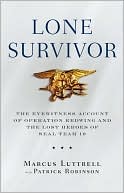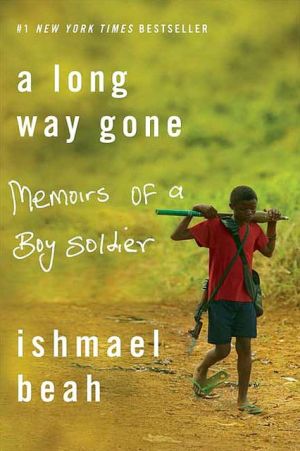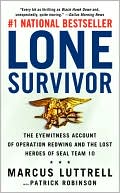In the Company of Soldiers: A Chronicle of Combat
From Pulitzer Prize winner and bestselling author Rick Atkinson (Liberation Trilogy) comes an eyewitness account of the war against Iraq and a vivid portrait of a remarkable group of soldiers. "A beautifully written and memorable account of combat from the top down and bottom up as the 101st Airborne commanders and front-line grunts battle their way to Baghdad.... A must-read."―Tom BrokawFor soldiers in the 101st Airborne Division, the road to Baghdad began with a midnight flight out of...
Search in google:
"Intimate, vivid, and well-informed . . . On the field of battle where more than 770 journalists were 'embedded,' Atkinson stood apart as one of the very rare war correspondents who are also fine military historians." —The New York Times Book ReviewFor soldiers in the 101st Airborne Division, the road to Baghdad began with a midnight flight out of Fort Campbell, Kentucky, in late February 2003. For Rick Atkinson, who would spend nearly two months covering the division for The Washington Post, the war in Iraq provided a unique opportunity to observe today's U.S. Army in combat. Now, in this extraordinary account of his odyssey with the 101st, Atkinson presents an intimate and revealing portrait of the soldiers who fight the expeditionary wars that have become the hallmark of our age. At the center of Atkinson's drama stands the compelling figure of Major General David H. Petraeus, described by one comrade as "the most competitive man on the planet." Atkinson spent virtually all day every day at Petraeus's elbow in Iraq, where he had an unobstructed view of the stresses, anxieties, and large joys of commanding 17,000 soldiers in combat. And all around Petraeus, we see the men and women of a storied division grapple with the challenges of waging war in an unspeakably harsh environment. With the eye of a master storyteller, a brilliant military historian puts us right on the battlefield. In the Company of Soldiers is a compelling, utterly fresh view of the modern American soldier in action. The Washington Post … this is still a perceptive, exciting and engaging book. The battle scenes are heart-pounding narratives of officers directing combat. Largely, the war on offer here is the one available over command post radio frequencies and in after-action reports, but Atkinson does a fine job of re-creating the division's battles from various threads of information, including the Army's own history of the conflict, written by the Operation Iraqi Freedom Study Group. Atkinson is wise to offer an occasional view of the wider war. — Anthony Swofford
\ From In the Company of Soldiers:\ We turned around. Najaf was pacified, at least for today. Back at the middle school where No Slack had its battalion command post, Hodges told Petraeus that he had declared Ali's shrine to be a demilitarized zone, "so there's no military presence west of Highway 9." He also had issued edicts outlawing revenge killings, but allowing the looting of Baath Party or Fedayeen properties. "You see guys walking down the street with desks, office chairs, lights, curtains," Hodges said, and I wondered whether authorized pilfering was a slippery slope toward anarchy.\ Before we walked back outside, Chris Hughes showed me a terrain model that had been discovered in a bathroom stall in a Baathist headquarters. Built on a sheet of plywood, roughly five feet by three feet, it depicted the Iraqi plan for Najaf's defense. Green toy soldiers, representing the Americans, stood below the escarpment on the southwestern approach to the city. Red toy soldiers, representing the Iraqis, occupied revetments along the perimeter avenues, with fallback positions designated in the city center. The model included little plastic cars, plastic palm trees, even plastic donkeys. Nowhere did I see JDAMs, Apaches, Kiowas, Hellfires, or signs of reality.\
Prologue1Part IPeace1Rough Men Stand Ready112Good for You and Good for Me293"This Thing Is Going to Go"434The Land of Not Quite Right615The Garden State79Part IIWar6"The Bold Thing Is Usually the Right Thing"1037Enemy in the Wire1258The Cry of Beasts in Their Desolate Houses1399"A Man Just Sort of Exists"15910Alexandria to Zoe18111An Army of Bones19312Nebuchadnezzar Goes Down21513"War Is a Bitch"24114At the Gates of Babylon25715"Every Thing Has Its Place"277Afterword297Author's Note307Glossary311Index313
\ From the Publisher\ "A beautifully written and memorable account of combat from the top down and bottom up as the 101st Airborne commanders and frontline grunts battle their way to Baghdad...A must read."—Tom Brokaw\ "A perceptive, exciting and engaging book. The battle scenes are heart-pounding narratives."—The Washington Post Book World\ "A fascinating first-hand account."—The Economist\ "An engaging and accurate view of life on the ground during the Iraq war. It likely will be the Embedded Book to Read."—Chicago Tribune\ "An exceptional achievement...With a skill rarely seen in the genre of military narratives, Atkinson tells a compelling story about the war and the modern American military that fought it."—The Indianapolis Star\ "Atkinson's deep knowledge of the U.S. military, combined with his reporting skills and fluid writing, have yielded, as expected, a superb book about the fall of Iraq."—The Denver Post\ \ \ \ \ \ The Washington Post… this is still a perceptive, exciting and engaging book. The battle scenes are heart-pounding narratives of officers directing combat. Largely, the war on offer here is the one available over command post radio frequencies and in after-action reports, but Atkinson does a fine job of re-creating the division's battles from various threads of information, including the Army's own history of the conflict, written by the Operation Iraqi Freedom Study Group. Atkinson is wise to offer an occasional view of the wider war. — Anthony Swofford\ \ \ The New York TimesOn a field of battle where more than 770 journalists were ''embedded'' with American troops, Atkinson stood apart as one of the very rare war correspondents who are also fine military historians. One of his earlier books dealt with the West Point class of 1966, including those platoon leaders sent to Vietnam who were bloodied in combat and embattled at home. Another of his books explored in detail the way Desert Storm was waged to liberate Kuwait in 1991. Atkinson actually learned he'd won the 2003 Pulitzer for An Army at Dawn, his history of the World War II North African campaign, while he was eating dust in the push toward Baghdad. So you'd expect this new volume, In the Company of Soldiers: A Chronicle of Combat, would be the most intimate, vivid and well-informed account yet published of those major combat operations that President Bush declared at an end on May 1. And it is. — Christopher Dickey\ \ \ \ \ Publishers WeeklyA Pulitzer-winning Washington Post correspondent and military historian gives the best account yet to come out of the Iraq War, chronicling the unit in which the author was embedded, the 101st Airborne, or Screaming Eagles, and particularly its headquarters. This inevitably puts much emphasis on the division commander, the intense, competitive and thoroughly professional Maj. Gen. David Petraeus. But no one is left out, from General Wallace, the gifted corps commander, to a Muslim convert and the victims of his ghastly but little publicized fragging incident at the opening of the war. The narrative covers this large cast from the division's being called up for the war at Fort Campbell, Ky., through to the author's departure from the unit after the fall of Baghdad. Through the eyes of the men he associated with, we see excess loads of personal gear being lugged into Iraq and insufficient supplies of essentials like ammunition and water (the reason for the infamous "pause"). We see sandstorms and the limitations of the Apache attack helicopter, and understand the legal framework for avoiding civilian casualties and "collateral damage," and much else that went right or wrong-in a manner that is antitriumphalist, but not antimilitary. The son of an army officer and thoroughly up to date on the modern American army, the author pays an eloquent and incisive tribute to how the men and women of the 101st won their part of the war in Iraq, in a manner that bears comparison to his Pulitzer-winning WWII volume, An Army at Dawn. Superb writing and balance make this the account to beat. $150,000 ad/promo; author tour. (Mar. 15) Copyright 2004 Reed Business Information.\ \ \ \ \ Library JournalWars come at a human cost to both the victors and the vanquished, and Pulitzer Prize-winning author Atkinson (An Army at Dawn) loses no time reminding readers that, all technological advances aside, warfare is still brutal and deadly for those at the tip of the spear. As an embedded journalist in the Iraqi headquarters of the 101st Airborne Division from February 2003 until the declared end of major combat operations in April, Atkinson became closest to Maj. Gen. David Petraeus. From this vantage point, he was able to watch the operation unfold and closely observe the development of senior combat leaders in the crucible of battle. While Atkinson asserts that the "war's predicate was phony"-which thus "cheapened the sacrifices of the dead and living alike"-he argues that it is imperative not to "conflate the warriors with the war." He found the warrior leaders of the 101st "uncommonly excellent" and relates their great endurance, flexibility, resourcefulness, and abiding concern for the welfare of their soldiers throughout all the challenges and hardships of the campaign. This fluid battle narrative will hold wide appeal and is recommended for all public libraries. [Previewed in Prepub Alert, LJ 12/03.]-Edward Metz, Combined Arms Research Lib., Leavenworth, KS Copyright 2004 Reed Business Information.\ \ \ \ \ School Library JournalAdult/High School-Atkinson takes the long view of history and blends it with a journalist's acuity for telling detail to create a narrative that is rich in immediacy, yet seasoned with thoughtful analysis. In the spring of 2003, the author accompanied combat units to Iraq. He spent two months embedded with the 101st Airborne Division's headquarters staff, sharing their daily experiences from initial deployment out of Fort Campbell, KY, to overseas staging areas in Kuwait, and ultimately bearing witness to the unit's march on Baghdad. His view of the war was from a vantage point that permitted scrutiny of strategy, planning, and decision making at the senior command level. Atkinson's portraits of military leadership are compelling, balanced, and nuanced; they reflect professionalism, a keen sense of responsibility for the 17,000 lives in the command, and constant reevaluation of optimal deployment of the unit's assets. The author draws upon his notes from the frequent battle update briefings he attended with the HQ staff, material from personal interviews conducted in the field, and supplementary data from "after action" reports to which he had access following his return to the States. This is a candid, well-paced work by a writer with an appreciation for the region's culture and geography, foreshadowing the challenges of U.S. presence "in a country with five thousand years' experience at resisting invaders."-Lynn Nutwell, Fairfax City Regional Library, VA Copyright 2004 Reed Business Information.\ \ \ \ \ Kirkus ReviewsA superbly written account of the recent unpleasantness in Mesopotamia. Pulitzer Prize-winning Washington Post writer Atkinson (An Army at Dawn, 2002, etc.) saw combat early on in Gulf War II as an embedded journalist with the 101st Airborne. He enjoyed unusually close access to the division's commander, Maj. Gen. David Petraeus, a tough "warfighter" who, Atkinson writes, "kept me at his elbow in Iraq virtually all day, every day, allowing me to feel the anxieties and the perturbations, the small satisfactions and the large joys of commanding 17,000 soldiers under fire." Much of Atkinson's account has a commander's-eye, synoptic view of the 2003 Iraq campaign, and it resounds with extraordinary statistics and facts that presumably were not available to the average grunt: for instance, that the Iraqi army was "poorly trained [and] . . . excessively led: an army of half a million included 11,000 generals and 14,000 colonels. (The U.S. Army, roughly the same size, had 307 generals and 3,500 colonels.)" Toward the end of the fight on the ground, the Americans had taken only 10 percent of the prisoners that they had in the first Gulf War-not because the Iraqis fought any better, but because that army simply melted into the crowd, some to fight another day. Atkinson's memoir is engaging on many levels; for civilians, it provides a crash course in military culture, while veterans will appreciate some of the eternal verities of that culture's illogic, whereas American soldiers were not allowed to have alcohol in the theater, for instance, Czech soldiers merrily stowed case after case of beer in their bivouac; whereas previous generations of soldiers marched on their stomachs, today's apparentlycan't make a move without a staff attorney on hand; and so forth. Atkinson shows the soldiers of the 101st and their comrades nothing but respect, even as he expresses misgivings for the mission: "They were better than the cause they served." Sure to be textbook reading at the Pentagon, but deserving of the widest audience. $150,000 ad/promo; author tour. Agent: Raphael Sagalyn/Sagalyn Literary Agency\ \








